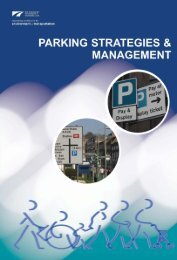Level 2 and 3 Diploma in Business Support (4475-12/13)
Level 2 and 3 Diploma in Business Support (4475-12/13)
Level 2 and 3 Diploma in Business Support (4475-12/13)
You also want an ePaper? Increase the reach of your titles
YUMPU automatically turns print PDFs into web optimized ePapers that Google loves.
Unit 208 Delivery of effective customer service<br />
Learn<strong>in</strong>g outcomes <strong>and</strong> assessment criteria<br />
Outcome 1 Be able to describe the pr<strong>in</strong>ciples of customer service<br />
The learner can:<br />
1. Identify the purpose of customer service<br />
2. Describe how customer service affects the success of the organisation<br />
3. Describe different types of customers of an organisation<br />
4. Identify the range of customer needs<br />
5. Identify the customer service <strong>in</strong>formation which may be reta<strong>in</strong>ed.<br />
6. Identify the difference between provid<strong>in</strong>g a product <strong>and</strong> provid<strong>in</strong>g a service<br />
7. Describe what is meant by an after-sales service<br />
8. Describe what is meant by a Unique Sell<strong>in</strong>g Po<strong>in</strong>t (USP) <strong>and</strong> a Unique Service Offer (USO)<br />
9. Identify the methods a customer service deliverer can use to keep product <strong>and</strong> service<br />
knowledge up-to-date<br />
10. Describe how an organisation can promote its products <strong>and</strong>/or services<br />
Outcome 2 Underst<strong>and</strong> how customer needs <strong>and</strong> expectations are<br />
formed<br />
The learner can:<br />
1. Describe the purpose of an organisation’s service offer<br />
2. Describe how customer expectations are formed<br />
3. Describe the <strong>in</strong>terrelationship between customer satisfaction <strong>and</strong> customer expectations<br />
4. Describe how customer needs can be identified<br />
5. Identify the methods of obta<strong>in</strong><strong>in</strong>g customer feedback<br />
6. Describe how an organisation can ma<strong>in</strong>ta<strong>in</strong> customer loyalty<br />
7. Identify why it is important to ensure effective customer relationships are ma<strong>in</strong>ta<strong>in</strong>ed<br />
8. Describe why it is important for a customer to be able to identify a ‘br<strong>and</strong>’<br />
Outcome 3 Underst<strong>and</strong> pr<strong>in</strong>ciples of respond<strong>in</strong>g to customers’ problems<br />
or compla<strong>in</strong>ts<br />
The learner can:<br />
1. Identify common causes of customer problems <strong>and</strong> compla<strong>in</strong>ts<br />
2. Identify different methods of communication<br />
3. Describe the importance of adapt<strong>in</strong>g methods of communication <strong>and</strong> behaviour to meet the<br />
<strong>in</strong>dividual needs of customers<br />
4. Expla<strong>in</strong> how the non verbal communication of the service deliverer can affect the behaviour of the<br />
customer<br />
5. Describe how personal presentation, approach <strong>and</strong> attitude will <strong>in</strong>fluence the perception of the<br />
service delivered<br />
Outcome 4 Be able to identify the <strong>in</strong>terpersonal <strong>and</strong> team work<strong>in</strong>g skills<br />
required <strong>in</strong> the customer service environment<br />
The learner can:<br />
1. Describe the skills required for effective team work<strong>in</strong>g<br />
2. Describe how to ma<strong>in</strong>ta<strong>in</strong> effective work<strong>in</strong>g relationships with<strong>in</strong> a team<br />
3. Describe the range of <strong>in</strong>ter-personal skills required for effective customer service<br />
<strong>Level</strong> 2 <strong>and</strong> 3 <strong>Diploma</strong> <strong>in</strong> Bus<strong>in</strong>ess <strong>Support</strong> (<strong>4475</strong>-<strong>12</strong>/<strong>13</strong>) 87







